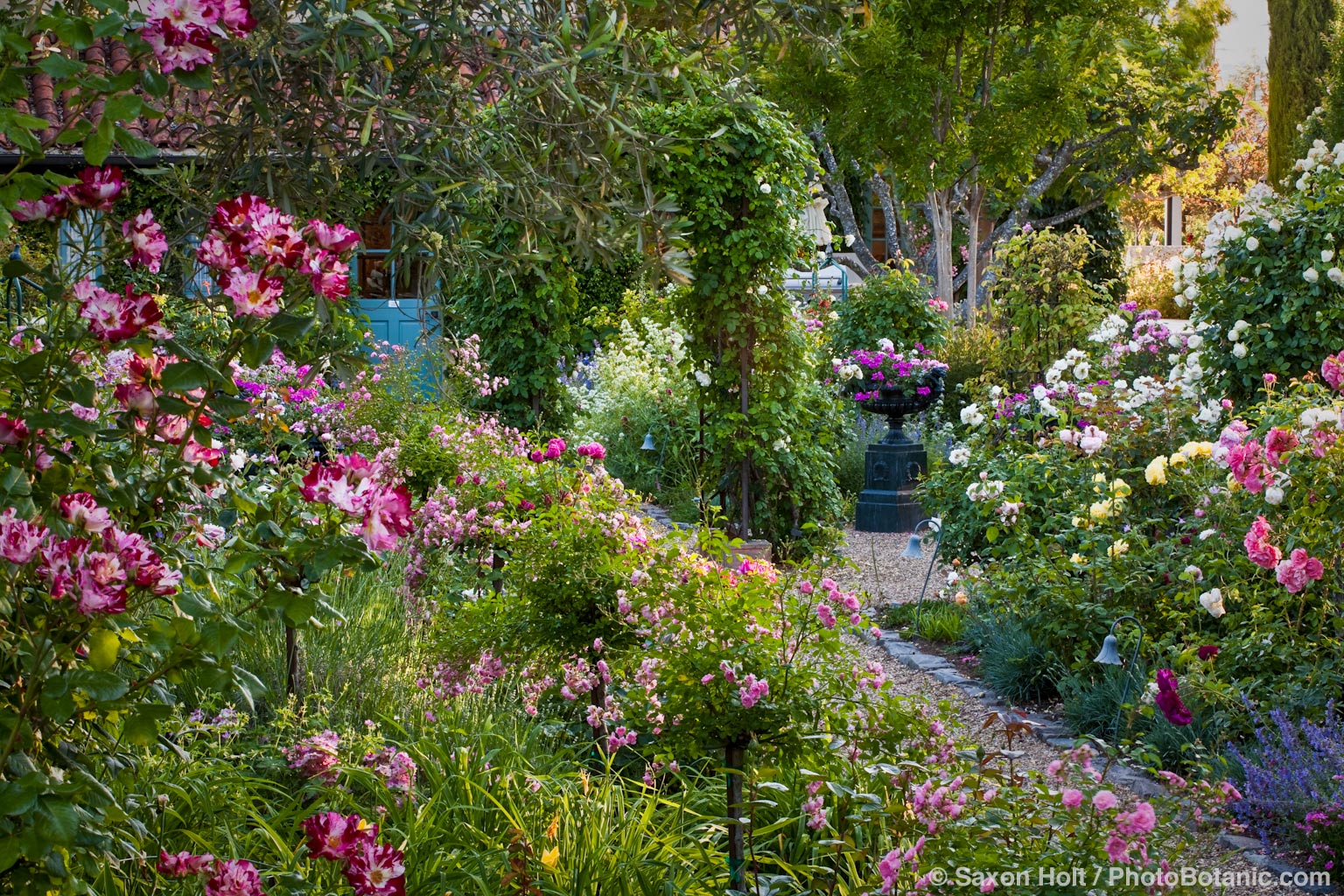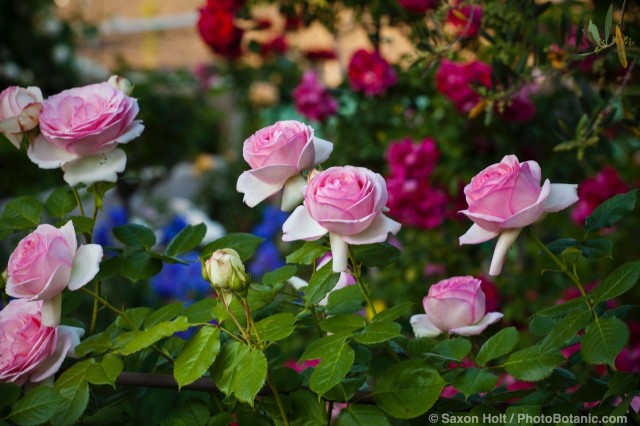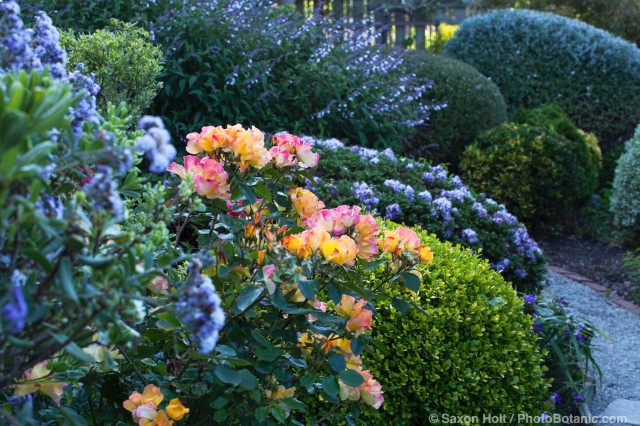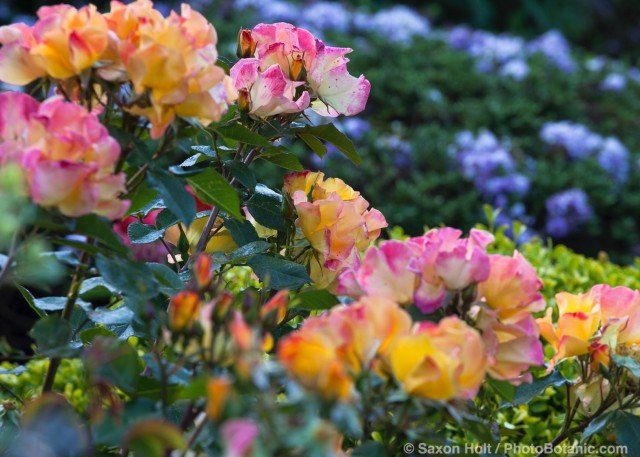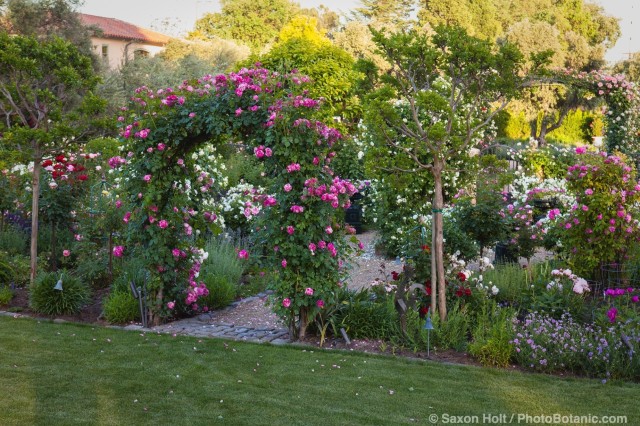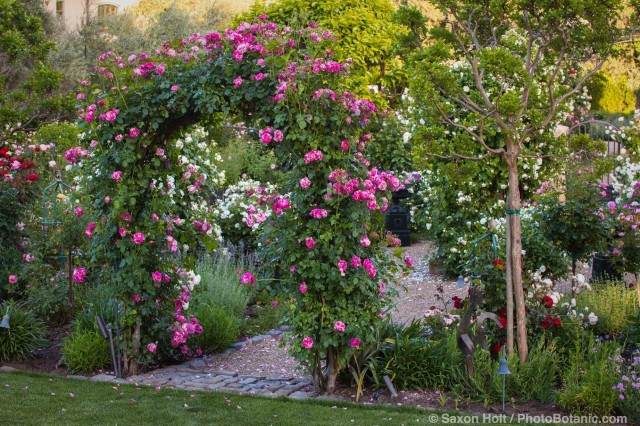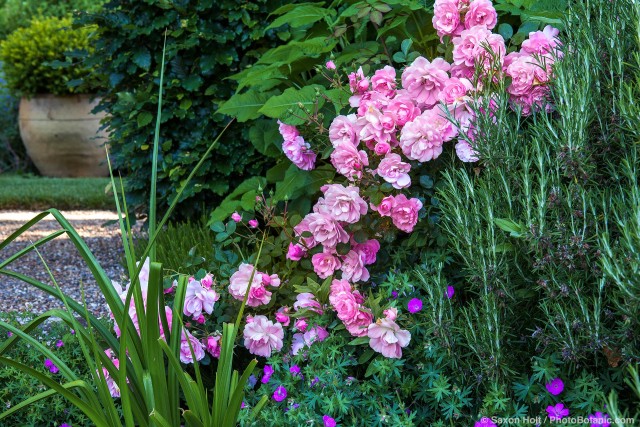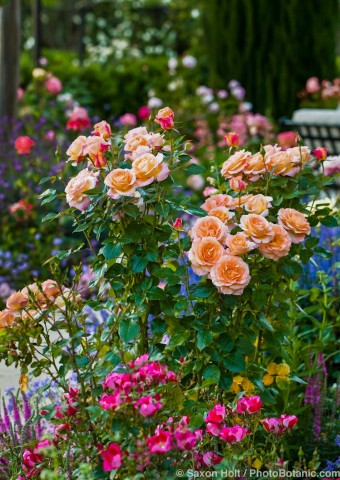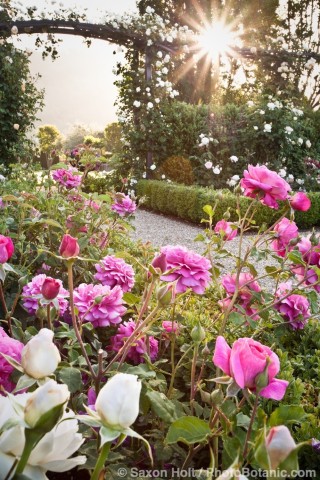I am starting a new book; The PhotoBotanic Guide to Photographing Roses. And just like my other e-books, the readers of Gardening Gone Wild are the guinea pigs, err, I mean get to read it here first.
The book begins with photographing roses in garden: Working in the Garden. Later chapters will talk about photographing bouquets and arrangements, macro photos, and making botanic illustration all glorifying the rose, the Queen of flowers.
Consider good composition.
The first thing I always tell my photography students is to fill the frame. Think of the four edges of your camera viewfinder as a canvas that you can fill up as would a painter. Don’t waste any space – work with intention.
Don’t just grab the first shot you see, think about how you want to fill the entire view. I love this ‘Eden’ rose.
Studying the scene a little bit I want to simplify and get rid of some of the distracting background. I moved to my left a little bit and shot back toward the other, out of focus rosebush, and now the flowers really stand out.
Here, in the next example I like the way this yellow ‘Flutterbye’ rose is tucked into the shrubs in Sally Robertson’s garden.
To capture an image of just the rose however, I need to come in tight and fill the frame. Notice how the use of a telephoto lens helps create one precise area of focus that draws the eye to the flower.
One of the biggest mistakes many photographers make is not coming in close enough to the subject. Fill the frame with just the important part.
The subject here is this hybrid climbing rose, ‘Berries ‘n Cream’ over this arch entering the garden.
Don’t waste extra space, come in tight on the subject. Note how I’ve put the arch slightly off center to create a more interesting composition.
Composition can be like a jigsaw puzzle, trying to put various elements and shapes together to make something pleasing and cohesive. Think about how shapes and blocks of color are organized within the frame.
This rose ‘Cornelia’ occupies its own space within the composition and the photo is carefully cropped to show the rose’s place in the garden, while it flows through the composition.
Think about the light.
Finding good light is the elixir that can make a photograph sing. Photographers are always in search of good light. Stay away from any hot, sunny, contrasty light, which will make colors harsh and metallic.
Roses often come in soft delicate colors, such as this ‘Tuscan Sun’, which looks fantastic in the garden with the other roses, the clear blues and multiple greens of the garden – which only come through in soft light, here, with high clouds on an overcast day.
When you find a rose you want to photograph in the bright sun you can use a scrim or diffusion disc to soften the light, which I will talk about later in the book, or simply wait for some shade. The color of the light changes in the shade, and that too, I will talk about later, but see how much nicer this rose looks in the shade as opposed to the hot contrasty sun.
My favorite time to photograph a garden is early morning. Late in the day is also a great time for good light but I really like the morning because the air is often clearer and the roses are more perky. I photographed this English rose ‘Christopher Marlowe’ just after dawn and was able to capture the sunburst through the distant trees.
Another tip for making interesting photographs is to try to find some provocation or intrigue, something interesting or distinctive that places the rose in the garden.
Tell Stories
On a rainy morning this rose, ‘Young Lycidas’ was falling over under the weight of the raindrops, and I found it against some blue pansies in the distance. An unexpected view, intriguing, fun to look at.
Be aware of what the garden is giving you, trust your instincts about beauty and carefully compose an image of the rose as an essence of the garden.
<End Chapter One>
<><><><><><><><><>
The book will be ready January 1. I love the immediacy of e-books on the web. Pre-0rder – $14.95.

